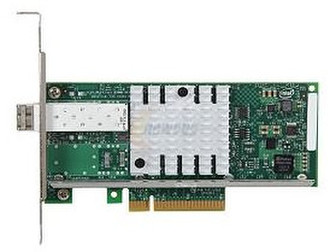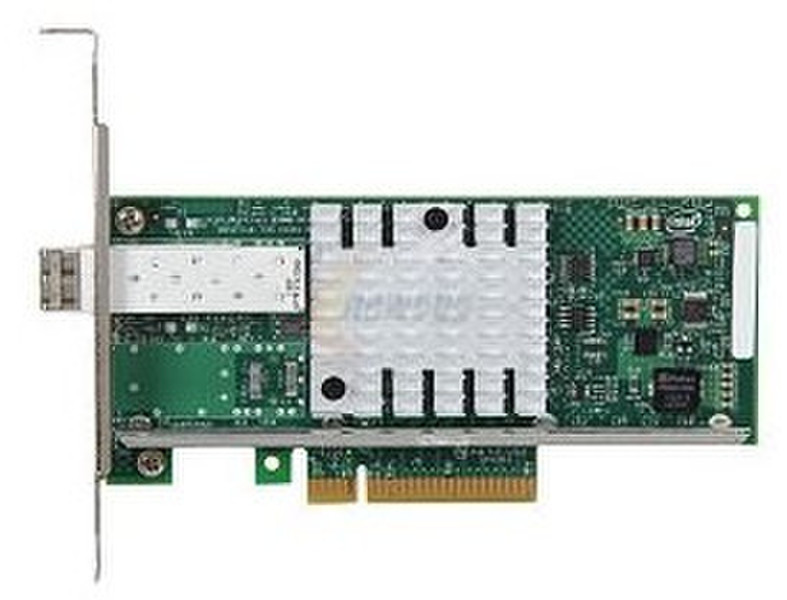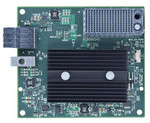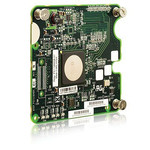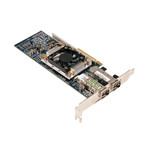目錄的
-
目錄的
- Antiquitäten & Kunst
- Auto & Motorrad: Fahrzeuge
- Baby
- Bücher
- Camping & Outdoor
- Feinschmecker
- Haustierbedarf
- Heimwerken & Garten
- IT和电子
- Kleidung & Accessoires
- Modellbau
- Musik
- PC- & Videospiele
- Sammeln & Seltenes
- Spielzeug
- TV, Video, DVD
- Telekommunikation
- Uhren & Schmuck
- Wellness & Beauty
- fashion & lifestyle
- institutional food services equipment
- medical equipment, accessories & supplies
- 个人护理
- 休闲爱好
- 办公设备,用品和配件
- 商业与工业
- 家居,建筑,装修
- 家用电器
- 摩托车及配件
- 武器和弹药
- 照相机
- 花园和庭院
- 运动,娱乐及休闲
- 食物
- 高保真音響
Filters
Search
Intel X520-SR1 Internal Fiber 10000Mbit/s
凡购买和价格 (Advertising *)
顶部
技术特点
顶部
端口 & 界面
| 光纤通道端口 | 1 |
|---|---|
| 主机接口 | PCI-E |
| 內置式 | Y |
技术细节
| 无卤 | N |
|---|---|
| 状态 | Launched |
| 散热设计功耗 (TDP) | 8 W |
性能
| 英特尔®数据直接I / O技术 | Y |
|---|---|
| 以太网光纤通道 | Y |
| iWARP / RDMA | N |
| 智能卸载 | Y |
| 速度和插槽宽度 | 5.0 GT/s, x8 Lane |
| 英特尔® 灵活端口分区 | Y |
| 英特尔®虚拟机设备队列(VMDq) | Y |
| PCI-SIG SR-IOV | Y |
| 新片QoS和流量管理 | Y |
| Ethernet adapter ARK ID | 39773 |
| 发热量 | 8 W |
其他功能
| 消息信号中断 | Y |
|---|---|
| 接口类型 | PCIe v2.0 (5.0GT/s) |
| 用于连接的英特尔®虚拟化技术(VT-C) | Y |
带宽
| 全双工传输 | Y |
|---|
设计
| 产品代号 | Spring Fountain |
|---|---|
| 产品系列 | Intel Converged X520 |
| 产品系列 | Intel 10 Gigabit server adapter |
| PCI卡电路板 | Full-height (low-profile) |
另外
| 数据传输率(最大) | 10000 Mbit/s |
|---|---|
| 连接方式 | Wired |
Ethernet Server Adapter X520-SR1
Intel’s new family of Intel® Ethernet X520 Server Adapters are the most flexible and scalable Ethernet adapters for today’s demanding data center environments.
The Intel® Ethernet X520 Server Adapter family addresses the demanding needs of the next-generation data center by providing unmatched features for virtualization, flexibility for LAN and SAN networking, and proven, reliable performance.
<b>Features and benefits</b>
-
<i>Intel® 82599 10 Gigabit Ethernet Controller</i>
Industry-leading, energy-efficient design for next-generation 10 Gigabit performance and multi-core processors;
-
<i>Low-profile</i>
Enables higher bandwidth and throughput from standard and low-profile PCIe slots and servers;
-
<i>Load balancing on multiple CPUs</i>
Increases performance on multi-processor systems by efficiently balancing network loads across
CPU cores when used with Receive-Side Scaling (RSS) from Microsoft or Scalable I/O on Linux*;
-
<i>iSCSI remote boot support</i>
Provides centralized storage area network (SAN) management at a lower cost than other iSCSI solutions;
-
<i>Support for most network operating systems (NOS)</i>
Enables widespread deployment;
-
<i>RoHS-compliant2</i>
Complies with the European Union directive 2002/95/EC to reduce the use of hazardous materials;
-
<i>Intel® PROSet utility for Microsoft Windows* Device Manager</i>
Provides point-and-click management of individual adapters, advanced adapter features, connection
teaming, and virtual local area network (VLAN) configuration;
-
<i>Time Sync (IEEE 1588, 802.1as)</i>
Lets networked Ethernet equipment synchronize internal clocks according to a network master clock;
endpoint can then acquire an accurate estimate of the master time by compensating for link latency;
The Intel® Ethernet X520 Server Adapter family addresses the demanding needs of the next-generation data center by providing unmatched features for virtualization, flexibility for LAN and SAN networking, and proven, reliable performance.
<b>Features and benefits</b>
-
<i>Intel® 82599 10 Gigabit Ethernet Controller</i>
Industry-leading, energy-efficient design for next-generation 10 Gigabit performance and multi-core processors;
-
<i>Low-profile</i>
Enables higher bandwidth and throughput from standard and low-profile PCIe slots and servers;
-
<i>Load balancing on multiple CPUs</i>
Increases performance on multi-processor systems by efficiently balancing network loads across
CPU cores when used with Receive-Side Scaling (RSS) from Microsoft or Scalable I/O on Linux*;
-
<i>iSCSI remote boot support</i>
Provides centralized storage area network (SAN) management at a lower cost than other iSCSI solutions;
-
<i>Support for most network operating systems (NOS)</i>
Enables widespread deployment;
-
<i>RoHS-compliant2</i>
Complies with the European Union directive 2002/95/EC to reduce the use of hazardous materials;
-
<i>Intel® PROSet utility for Microsoft Windows* Device Manager</i>
Provides point-and-click management of individual adapters, advanced adapter features, connection
teaming, and virtual local area network (VLAN) configuration;
-
<i>Time Sync (IEEE 1588, 802.1as)</i>
Lets networked Ethernet equipment synchronize internal clocks according to a network master clock;
endpoint can then acquire an accurate estimate of the master time by compensating for link latency;
類似的優惠
顶部
-
支付方式
我们接受:


